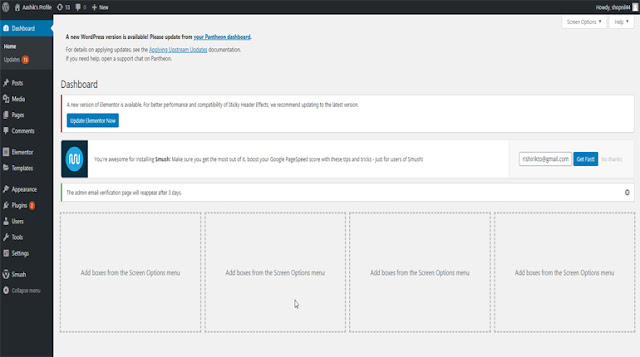Introduction...
At the point when I originally got into web advancement, right back in 2002, a
apparatus like WordPress didn't exist yet. In actuality, it wouldn't
be until right around a year after the fact that WordPress would be delivered to
people in general for the essential time; not that I used to have the option to utilize WordPress
at starting delivery. I really didn't begin utilizing it until 2004 (around
WordPress 5 update revamp 2021), when my companion enlightened me regarding this new writing for a blog
stage that I ought to think about as opposed to composing my own .
I quickly fell insane , hacking ceaselessly, learning the stage, making
my own changes (once in a while to the core1
), and watching it develop
throughout the long term. What started as a simple , open source writing for a blog
stage is currently a super-incredible substance the board framework
(CMS) which may flaunt that it's the chief broadly utilized CMS on the
Internet.
during this book, I choose to train you approaches to utilize WordPress,
also on the grounds that the on account of influence the API to make your own custom
topics, modules, and substance types. As such, prepared to |i'll"> prepared to |i'll"> I will actually want to have the option to have the option to show you
step by step instructions to make WordPress your own.
Why I Wrote This....
WordPress is living stage with steady updates and major
improvements delivered each 6 a year. At the hour of this composition, WordPress 3.3 had recently been delivered with many new,
truly decent highlights. In view of this always evolving scene, it's
critical to keep clients refreshed on the best in class WordPress abilities.
Building Our HTML Theme....
Included with this book are a couple of things: the Photoshop documents
(PSDs) from which the plan came, the HTML layouts I made
from the PSDs, and the completely practical WordPress subject. While
we will not be going over cutting and dicing the PSDs, I will take this
freedom to disclose the HTML layout to a degree, since I
need you to be fairly acquainted with the reason for our WordPress
topic. Going ahead, remember that we're assembling a business
registry site.
Converting HTML to a WordPress Theme....
Records and Structure
You will discover four HTML records we will change over (one for each
PSD):
• index.html – The landing page plan
• blog.html – A blog entry posting page
• directory.html – A professional resource page
• business.html – A solitary business page
The entirety of our topics pages will be gotten from the markup on these
pages.
You will likewise discover two envelopes: a/pictures/organizer, where all topic
pictures will go (there are relatively few), and a/css/envelope, where all of
the CSS will go. Inside the/css/envelope, there are four CSS records that
make up a basic structure I use for styling my sites (thank
you, Dan Cederholm). They are:
• reset.css – Your standard CSS reset for greatest program
similarity.
• master.css – The essence of the matter. The entirety of the fundamental CSS
lives here.
• ie.css – Any IE fixes go here. Fortunately there aren't too much.
• style.css – This will just import the other three templates (in the request I've recorded them here. That is very
significant).
Steps for Creating WordPress Theme by Coding...
Step 1: header. php File. You need to put this code in the header.
Step 2: index. php File. The main file index.
Step 3: Sidebar. php File.
Step 4: footer. php File.
Step 5: style. css File.
You will likewise discover a/img/organizer inside the/css/envelope. Any pictures
that are called inside the CSS go in this organizer.
The first line is the doctype declaration, which is simply:
<!DOCTYPE html>
When HTML5 sees appropriation from all programs and more seasoned programs
are eliminated, this is everything that will be vital to utilize it.
Notwithstanding, at this moment we do have more seasoned programs that don't uphold
it (I'm taking a gander at you, IE), so we need some JavaScript wizardry in
request to make it work. We will utilize the significant html5shiv,6
which will add HTML5 components to the Document Object Model
(DOM), so we can add style definitions for them in our CSS,
also, on the off chance that we so want, we can control them utilizing JavaScript.
